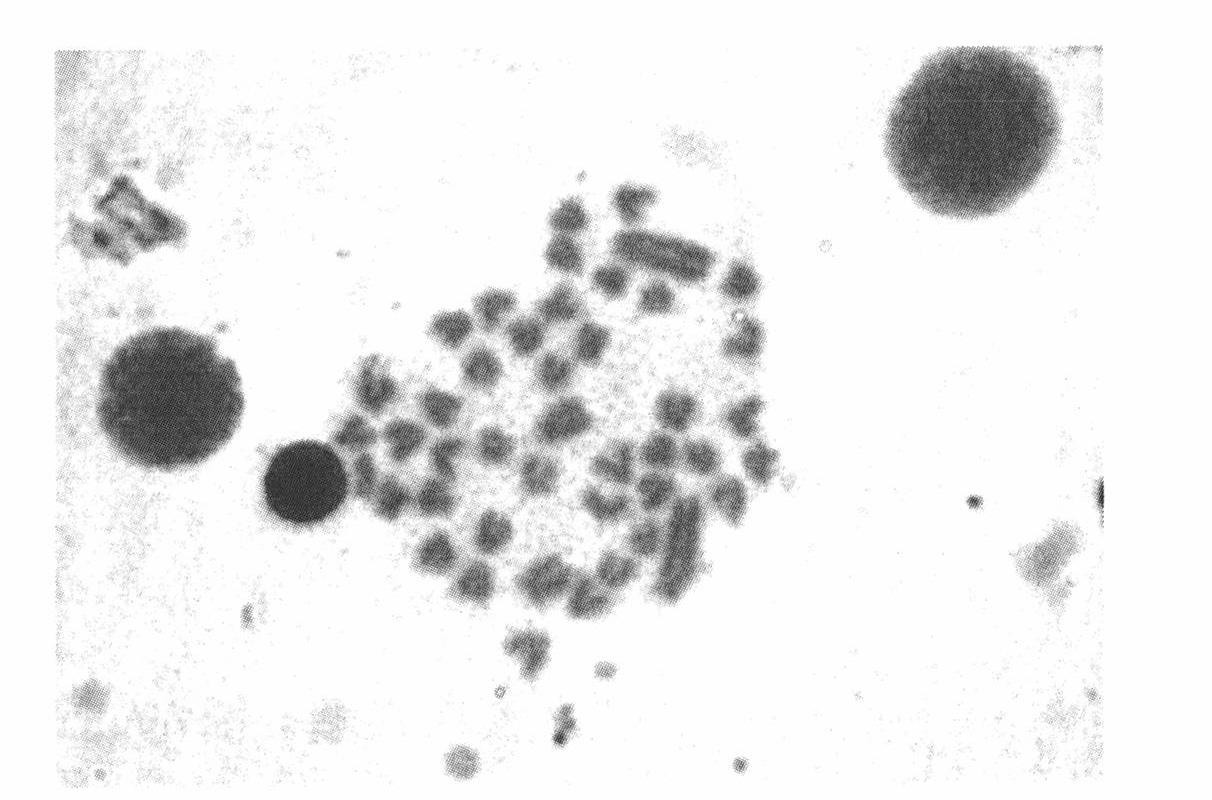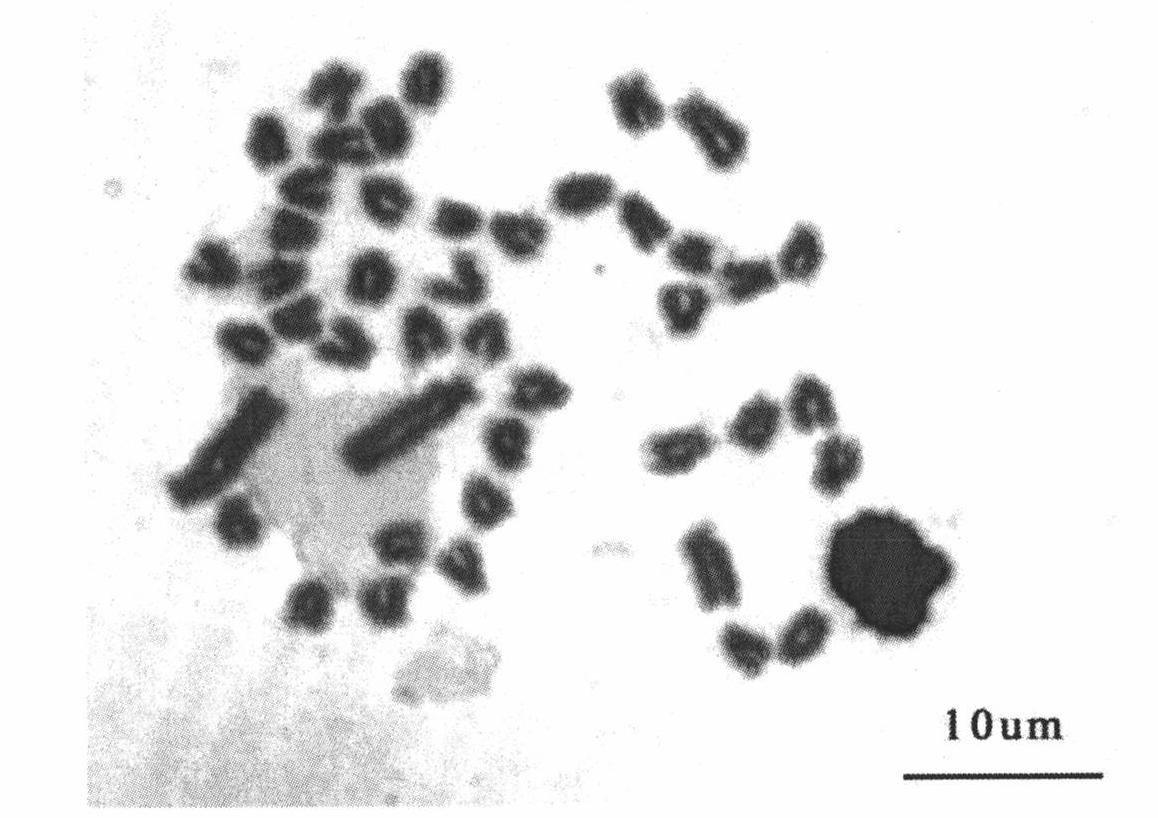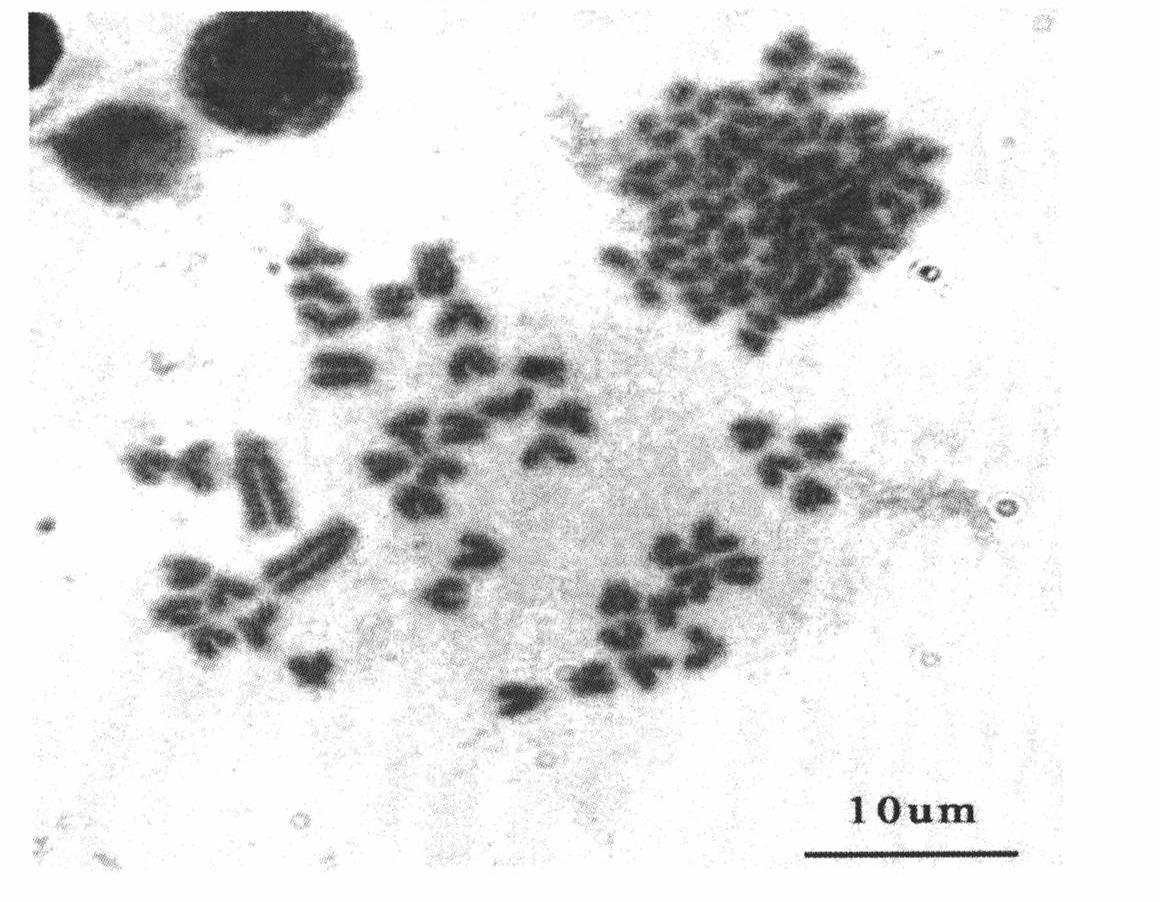Discriminating method of inherited characteristics of Kyrgyzstan cichlidae and application thereof
A kind of technology of australis and fish, applied in the field of biometric identification, can solve the problem of difficulty in distinguishing between scientific and technological personnel and consumers
- Summary
- Abstract
- Description
- Claims
- Application Information
AI Technical Summary
Problems solved by technology
Method used
Image
Examples
Embodiment 1
[0062] Example 1 Karyotype analysis
[0063] 1.1 method
[0064] Phytohemagglutinin (PHA) was injected in vivo to prepare chromosome slide specimens. Take 10 healthy fish, weighing about 100g. The experimental fish were temporarily kept in an indoor temperature-controlled, inflatable aquarium one week before the experiment, and the water temperature was about 30°C. PHA was injected at the pectoral fin of 10μg / g fish body weight. After 16 to 18 hours, colchicine solution was injected at 2μg / g fish body weight. After 3h, the gills were cut and bloodletted. The head and kidney were placed in a dish filled with physiological saline and ground to make the The cells freed up. Aspirate the cell suspension in 0.075mol / L KCL solution at 37°C for 30 min. Subsequently, it was centrifuged at 1000r / min for 8min, the supernatant was discarded, and the newly prepared Carnoy's solution (methanol: glacial acetic acid=3:1) was added to fix for 15min and then centrifuged for 8min, then the fixati...
Embodiment 2
[0083] Example 2 Isozyme
[0084] 2.1 Method
[0085] Choose 30 fish of good size, healthy and weighing about 100g. According to the National Standard of the People's Republic of China (GB / T18654.13-2008): "Cultured Fish Germplasm Inspection Part 13: Isozyme Electrophoresis Analysis".
[0086] In short, this includes: obtaining fish tissues (respectively muscle, liver, kidney, heart, and eye tissues), after homogenizing, centrifuging the homogenized sample at 15000 rpm until the supernatant is clear, and taking the form after centrifugation The supernatant was detected by isozyme electrophoresis.
[0087] 2.2 Results
[0088] The ADH, LDH, IDH and equivalent enzymes in the muscle, liver, kidney, heart, and eye tissues of Tilapia and its parents were detected by polyacrylamide gel electrophoresis.
[0089] The results showed that for ADH and IDH, Tilapia and its two parents did not show obvious polymorphism, but for LDH, it showed obvious polymorphism.
[0090] As shown in Figure 3, the ...
Embodiment 3
[0091] Example 3 Microsatellite Marker
[0092] 3.1 Method
[0093] Thirty fish were randomly sampled, caudal fins were cut, numbered and stored in 95% ethanol for later use. Genomic DNA extraction is carried out by the conventional "phenol-chloroform" method, the specific steps are: take about 0.1g of the tail fin and add 400μL STE (30mmol / L Tris-HCl, pH8.0, 200mmol / L EDTA, 50mmol / L NaCl) buffer , After mixing, add proteinase K with a final concentration of 1% SDS 200μg / mL, and let it act overnight at about 55°C. Add an equal volume of saturated phenol and mix well for 1h, centrifuge at 10,000r for 10min, absorb the supernatant and add an equal volume of the mixed solution (phenol:chloroform:isoamyl alcohol=25:24:1), mix well for 0.5h, absorb the supernatant Add an equal volume of the mixed solution (chloroform: isoamyl alcohol = 24:1), mix well for 0.5h, discard the lower layer; then add 2 times the volume of absolute ethanol (preferably frozen) to precipitate the DNA, and then...
PUM
 Login to View More
Login to View More Abstract
Description
Claims
Application Information
 Login to View More
Login to View More - R&D
- Intellectual Property
- Life Sciences
- Materials
- Tech Scout
- Unparalleled Data Quality
- Higher Quality Content
- 60% Fewer Hallucinations
Browse by: Latest US Patents, China's latest patents, Technical Efficacy Thesaurus, Application Domain, Technology Topic, Popular Technical Reports.
© 2025 PatSnap. All rights reserved.Legal|Privacy policy|Modern Slavery Act Transparency Statement|Sitemap|About US| Contact US: help@patsnap.com



